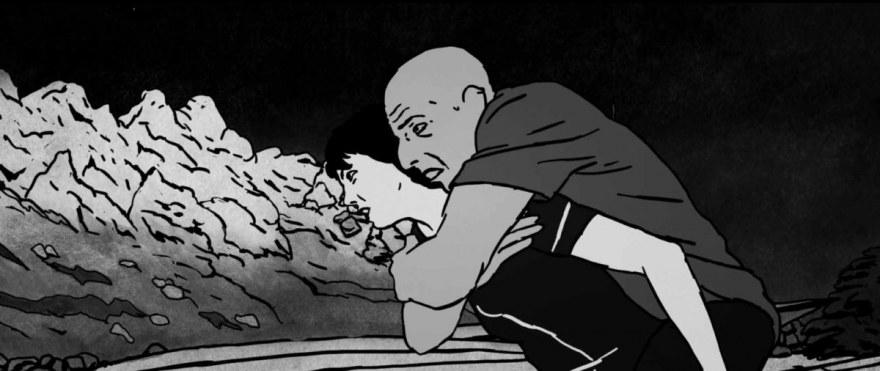Lunch with La nuit des sacs plastiques [The Night of the Plastic Bags]
Interview with Gabriel Harel, director of La nuit des sacs plastiques [The Night of the Plastic Bags]
How did you come up with the idea of bringing plastic bags to life?
At that time, I really wanted to make an animated fantasy film, a bit of a horror story with a monster, I was looking for that monster. The idea came to me after a phone call with my big sister: she was at the Old Port in Marseilles, and on the other end of the line I could hear the street cleaning trucks with their water hoses. My sister was telling me that she had just broken up with her boyfriend, she was 35 and childless, so I started worrying about her, her biological clock ticking and this break-up that was exhausting her. Suddenly, she screamed: “HAAAAAAAARR!!!”. Really worried, I heard a sound in the telephone, and then she came back on and told me that she had just been attacked by a plastic bag that the wind had blown into her face, all wet from the water on the sidewalk. I felt bad for my sister, but I had just found my monster.
Why did you want to bring out the plastic bags in blue and pink colors?
It’s a choice I made when I saw the end of the film. The film is in black and white for the world of men, and in color for the world of plastic. I wanted to take the opposing view of the mean, black monster: the plastic bags are nasty polluters, but they have pretty colors. They smother, devour, and rape, but they have vibrant colors, pop colors. Plastic bags are light and possess a rare solidity, they fly, twist around, swim in the water, their life span is long and they are colorful, they are beautiful, they are a sort of perfection of “nature”. We will most certainly not be here to see it, but the upcoming era of plastic bags will be glorious. It’s not a very clear or logical explanation, I just wanted to elevate the film above our own mortal problems. Through surrealism, I wanted to offer a more poetic ending.
What interested you in Agathe’s desire to have a child and its outrageousness?
Agathe wants a child while humanity is dying, suffocated by its own creation. But it is the primary goal of all living beings, to reproduce at all costs. Finally, she is the only character that embodies hope, the desire to live, to fight, to reproduce. Her boyfriend for example is a bit more defeatist, trapped in a rather destructive punk rock universe. I have heard women approaching their forties who are completely obsessed with the idea of having a child, then the obsession passes with age. We might say it is a vital, hormonal impulse. Agathe is obsessed with having a child, but we are all a bit selfish faced with the planet’s problems. The planet’s alarm button has been pressed, Agatha’s pressing need is to have a child, others may absolutely want to get a promotion, obtain power, buy a house, make a film. In this fantastical and offbeat fictional story, this obsession becomes a comical effect.
How did you work on the settings?
Grégoire Carlé created the settings. He is a comic book writer, but also someone very connected to nature. He is an excellent drawer and painter of landscapes. The story takes place in the rocky inlets of Marseilles, at the Baie des Singes beach at Cap Croisette, just opposite Île Maïre. It is a place that has always fascinated and inspired me. It is a very cinematographic place at the end of the world, the road ends, an old electrical line follows the rocks up to the cabins in Cap Croisette and there are bunkers that evoke the war. Quite the post-apocalyptic setting. I did a lot of scouting in this inlet, and then there was the film shoot with the actors. We shot and acted out scenes in natural settings, with a small film crew. So, Grégoire had all of the settings filmed and the scouting photos in the research documentation. From there, he worked on a painting method, he drew and then painted the settings with his own personal touch, he injected character and expressiveness into the landscapes.
Are there any particular freedoms that the short film format allows you?
Yes, of course. Seeing that feature-length animations must fit into a very restricted market, it’s obvious I could never have proposed a film like this in a feature-length format. The offbeat and somewhat deviant nature of the film, the black and white, the choppy animation, formally for an animated film, it’s already a bit delicate. But we were able to propose things that would have been difficult to propose in a feature-length film.
La nuit des sacs plastiques [The Night of the Plastic Bags] was selected in the National Competition (F5).








